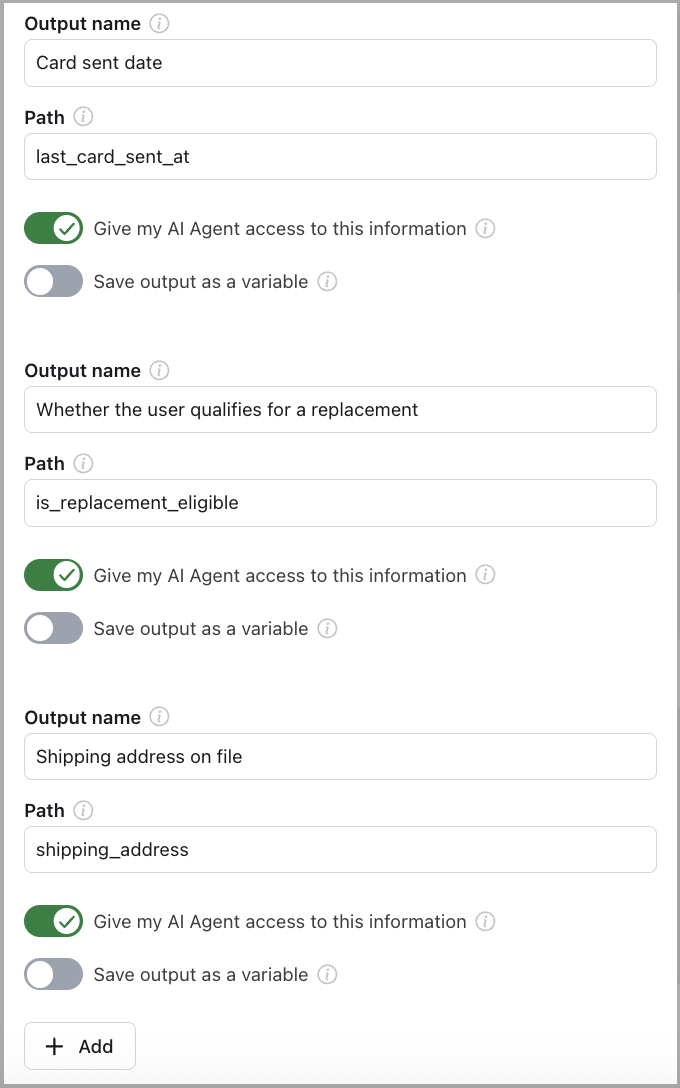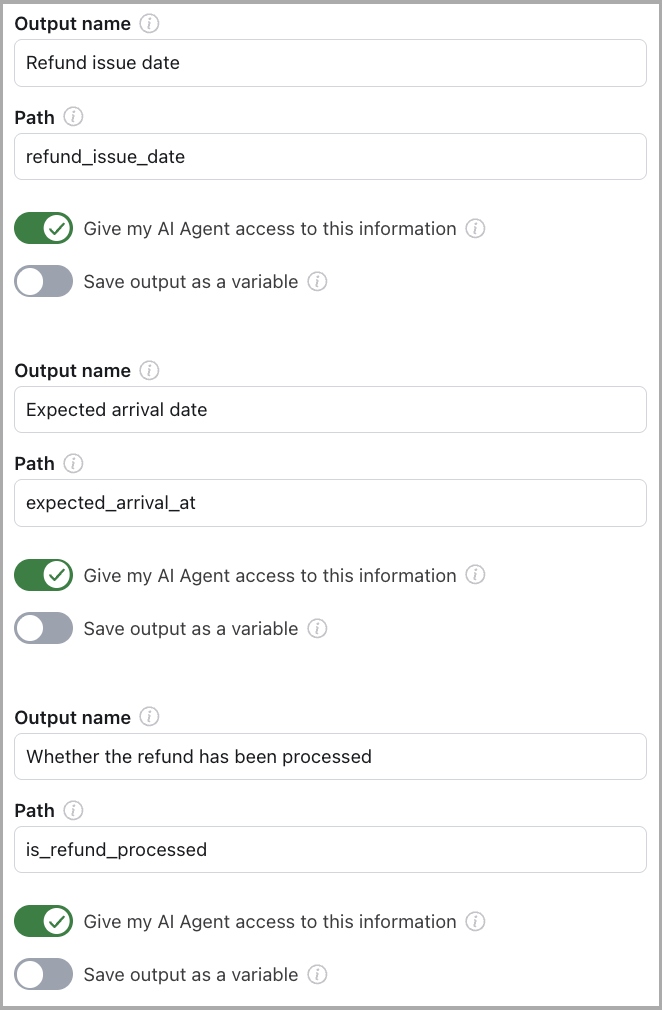Best practices
One of the most effective ways to improve resolution rates and reduce Handoffs is to let your AI Agent go beyond answering questions and actually take action. By connecting your backend systems through Actions, the Agent can complete tasks or retrieve real-time information without human intervention.
The following examples illustrate how adding Actions to existing flows can transform vague or escalated experiences into complete, automated resolutions that boost CSAT and increase automation coverage.
Example: Card fulfillment
While analyzing Topics with high AR Opportunity, card fulfillment emerged as a recurring issue: the AI Agent begins the right flow, but ultimately hands off when automation could have continued. After applying Coaching(../coaching/overview.mdx), the Agent clarified the situation and pointed users to a helpful Knowledge article. That reduced unnecessary escalations—but the experience still relied on the end user taking action.
You can now fully automate this flow by using an Action to handle card reshipments directly:
-
Add an Action that checks reshipment eligibility based on user-specific information:
- When the last card was sent
- Whether the user qualifies for a replacement
- The shipping address on file
For example:

-
Wrap the logic in a Playbook to guide the Agent through:
- Confirming the address
- Checking how many days have passed since the last shipment
- Running the eligibility check
- Automatically triggering the reshipment if eligible
-
Provide user-friendly updates throughout the Playbook to confirm what’s happening and set clear expectations.
This upgrade lets the Agent fully resolve card issues without a Handoff—improving CSAT and boosting automation.
Example: Subscription refund status
Customers often ask when their subscription refund will be processed. Right now, the AI Agent escalates—despite the fact that refund data is available in the backend.
You can automate this by using an Action to retrieve and return refund details:
-
Create an Action that pulls the user’s subscription refund status, including:
- Refund issue date
- Expected arrival time
- Whether the refund has been processed
For example:

-
Use a Playbook to call the Action and respond with a clear message, such as: Your refund was issued on July 10 and should arrive in 5–7 business days.
By integrating real-time refund data, the Agent can answer this question confidently and completely—saving your team time and improving the customer experience in a moment that often leads to frustration.